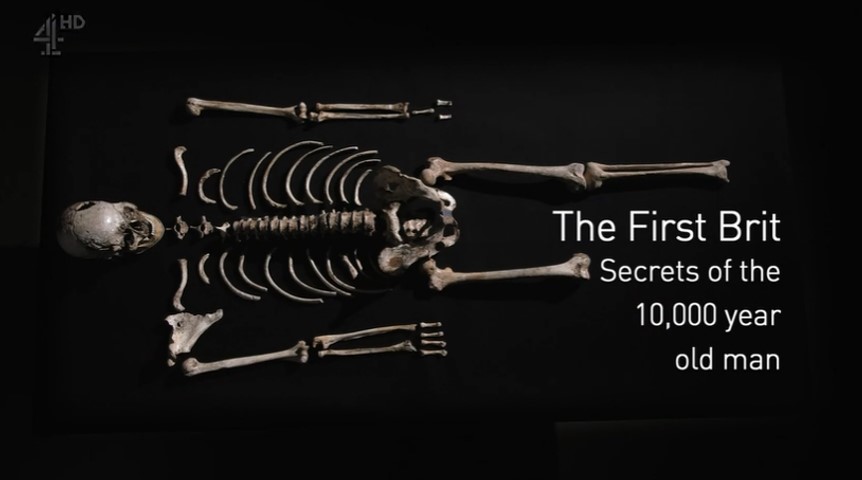 By Neenah Payne
By Neenah Payne
When Moors Rescued Europe From The Dark Ages explains that the first Italians, the Etruscans, were Black. It shows that two Africans and a European won the NYC Marathon in 2021. Can you identify the Africans and the European in the photos below? Eyob Faniel of Italy (on the right) was third in the race in the marathon. He’s Italian, but looks Black. Second-place finisher Mohamed Reda El Aaraby (on the left) is from Morocco in North Africa and looks “White”.
DNA OF First Briton
Secret History 2018 — Secrets of the 10,000-Year-Old Man explains that reconstruction of the first man in Britain, Cheddar Man, from his DNA shows he had dark skin, dark hair, blue eyes, and a broad nose, with coarse hair. The video says this is how most Europeans looked 10,000 years ago.
“Follows the UK’s most ambitious and cutting-edge ancient DNA project to date. For the first time, a team of top scientists at the Natural History Museum and University College London have analysed the DNA of Britain’s oldest complete skeleton. Known as Cheddar Man, this human male fossil was originally unearthed over 100 years ago in Gough’s Cave in Cheddar Gorge, Somerset. Building on the advanced genetic testing of his 10,000-year-old bones, two of the most acclaimed palaeontological model makers in the world, Dutch identical twins Adrie and Alfons Kennis, have recreated Cheddar Man’s entire head to give his extraordinary skeleton a real identity for the first time.”
“The bones are the oldest near-complete human skeleton ever found in Britain and were unearthed in 1903. Researchers extracted DNA data from bone powder by drilling a 2mm hole through the skull’s inner ear bone. It showed that there was a 76 per cent chance that Cheddar Man was ‘dark to black’ by today’s standards. Research suggests the first inhabitants of the British isles developed white skin later on than thought.
The first ancient Britons had black skin, dark curly hair and blue eyes, according to DNA tests. The ‘extraordinary’ findings were made by cutting-edge genetic tests and facial reconstruction techniques carried out for the first time on the bones of ‘Cheddar Man’ who died 10,000 years ago. The bones, found in Somerset’s Cheddar Gorge, are the oldest near-complete human skeleton ever found in Britain and scientists said they were surprised to discover that the earliest Briton would be considered ‘black’ if he lived today.
Experts also revealed that Cheddar Man shares ten per cent of his DNA with people living in the UK today. The Natural History Museum and Channel 4 unveiled a reconstruction of the ancient human yesterday, which was made for a documentary: The First Brit: Secrets of the 10,000 Year Old Man.
Cheddar Man’s bones caused a sensation when they were unearthed in Cheddar Gorge, Somerset in 1903. For more than 100 years, scientists have tried to reveal Cheddar Man’s story, posing theories as to what he looked like, where he came from and what he can tell us about our earliest ancestors.
Only now with cutting-edge DNA and facial reconstruction techniques can we see for the first time the face of this 10,000 year old man, and ask how 300 generations later he relates to us today. Experts from the museum and University College London conducted genetic tests on the remains, discovered in Gough’s Cave, which were taken by drilling a bone in the skull and sequencing the DNA preserved inside.
Dr Tom Booth, a scientist from the museum said that the findings that there was a 76 per cent chance that Cheddar Man was ‘dark to black’ – was ‘extraordinary’. He said in the documentary: ‘If a human with that colour skin wandered around now, we’d call him black, and a lot darker than we’d expect for Europe as well. He added: ‘It really shows up that these imaginary racial categories that we have are really very modern constructions, or very recent constructions that are really not applicable to the past at all.’
Dr Rick Schulting, an archaeology professor at Oxford University said: ‘It may be that we may have to rethink some of our notions of what it is to be British, what we expect a Briton to look like at this time.’
A previous reconstruction of Cheddar Man, made by the University of Manchester before DNA tests were available, depicted him with white skin.
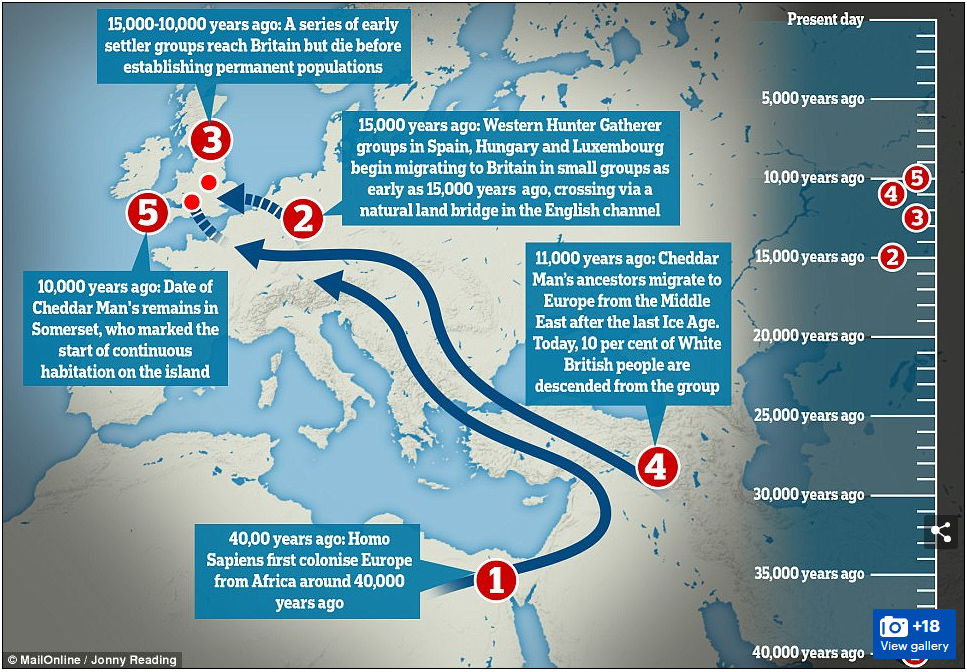 For more than 100 years, scientists have tried to reveal Cheddar Man’s story, posing theories as to what he looked like, where he came from and what he can tell us about our earliest ancestors. This image shows researchers responsible for the creation of the new bust.
For more than 100 years, scientists have tried to reveal Cheddar Man’s story, posing theories as to what he looked like, where he came from and what he can tell us about our earliest ancestors. This image shows researchers responsible for the creation of the new bust.
Professor Ian Barnes, a geneticist, who worked on the investigation said the discovery that the first Briton was black was not expected. He said: ‘I assume that’s going to be a big surprise to most members of the public. It was certainly quite a big surprise to me.’
Britain in the Mesolithic era, the Middle stone age around 8,000 BC, was a very different place from today. An Ice Age had just finished and the land had become green again. Herds of aurochs – huge, wild cattle – and red deer roamed the land. Perhaps in pursuit of game, hunter gathering tribes swept in from what is now continental Europe across a land bridge across the North Sea – known as Doggerland.
The total human population in Britain was then just 12,000. Tests on the DNA of modern Britons reveal we have around 10 per cent of our DNA in common with Cheddar Man and his tribe. Close genetic matches to Cheddar Man have been found in remains in western Europe at sites including Spain, Hungary and Luxembourg. Scientists say that Cheddar Man’s ancestors arrived in the Britain via the Middle East, after coming out of Africa.
Professor Ian Barnes, research leader at the Natural History Museum, said at a screening of the documentary: ‘For me, it’s not just the skin colour that’s interesting, it’s that combination of features that make him look not like anyone that you’d see today. ‘Not just dark skin and blue eyes, because you can get that combination, but also the face shape. So all of this combines together and make him just not the same as people you see around today.’
Professor Barnes added that although this was just one individual, he said: ‘At the moment I’d suggest this is a good model for what the rest of Britain looked like. ’Professor Barnes and Dr Selina Brace extracted DNA data from bone powder by drilling a 2mm (0.07 inch) hole through the skull’s inner ear bone.”
Cheddar Man: Mesolithic Britain’s blue-eyed boy
This map shows that North Europeans in the dark blue areas looked most like Cheddar Man.
Prehistoric Man in Europe
Is this worth reading – is it True?
“On first reading, readers of these pages generally feel amazement, the concept of Blacks being the original settlers, and builders of the first civilizations everywhere, including Europe, is particularly unsettling to them. Both Black and White, because they were taught that there were no Blacks in Europe until the Romans brought them.
Then some Blacks correctly say: Uh huh, I knew the Whites were lying…. But Whites remain incredulous, they say: this is simply Blacks with no accomplishments, trying to steal White accomplishment and history! They say, if this was true, my Teachers and Professors would have taught it to me. So either this is lies, or the information is so new that my Teachers and Professors don’t know about it yet!
Well No…. The fact is that European scientists had evidence, and knew from earlier than the 19th century, of the Black man’s central role in settling and establishing civilization in Europe and everywhere else. The exhibits below attest to the fact that this knowledge was known over a hundred years ago.”
PREHISTORIC MAN AND HIS STORY.
By Professor G. F. SCOTT ELLIOT, M.A., B.Sc., F.L.S., F.R.G.S.
Black Builders of Stonehenge
Megalith: The Black Builders of Stonehenge
Amazon Description
“On the plains of Wiltshire in England lie the remains of ancient giant stones. Exactly which people built these stones remains the eternal question. Just like the pyramids of Egypt its origins remain shrouded in mystery. Various theories have been put forward as to the race or otherwise of these builders, but still, much uncertainty remains. The evidence is simply overwhelming that the earliest inhabitants of Britain and Ireland were Blacks. Mythological, archeological, linguistic and other sources have substantiated this remarkable fact. Candid authorities like the British Egyptologists Gerald Massey and Albert Churchward, the Scottish historian David Mac Ritchie, and the British antiquarian Godfrey Higgins, have done exhaustive research and brought many facts to our knowledge.
Tacitus, Pliny, Claudian and other writers have described the Blacks they encountered in the British Isles as ‘Black as Ethiopians,’ ‘Cum Nigris Gentibus,’ ‘nimble-footed blackamoors,’ and so on. This book reveals much about the Black presence in the early British Isles, including the ‘mysterious’ builders of Stonehenge. We learn about the Black Fomorians, Partholonians, Nemedians, Firbolgs, Tuatha De Danann, Black Danes, Black Douglases, the giants or Cyclopes and so on.
We also learn about the Black serpent-worshiping Druids who built serpentine monuments like those at Avebury and Carnac, as well as the builders of the Round Towers of Ireland. The fact remains, that Blacks have played a very important role in the early history, traditions, religion and so on, of early Britain and elsewhere than is generally known and acknowledged. This is a must-read book.”
These Black People Built Stonehenge
We FINALLY Know How Stonehenge Was Built
The Whitewashing of European History
The video explains that British racism is a recent development. Moors ruled Spain from 711-1492 AD.
Blacks Britannica: Diversity in Medieval and Early Modern England
“Africans have been present in England for more than two thousand years, but we rarely see them or hear about them. And often their existence is dismissed as a figment of ‘political correctness’ or ‘wokism.’ This lecture will critically assess the myth of England’s story as a ‘sacred white space’ and examine the evidence for diversity in medieval and early modern history. Africans are integral to English history and forgetting this diminishes Englishness, by preventing us from understanding ourselves.”
Book: Nature Knows No Color-Line: Research into the Negro Ancestry in the White Race
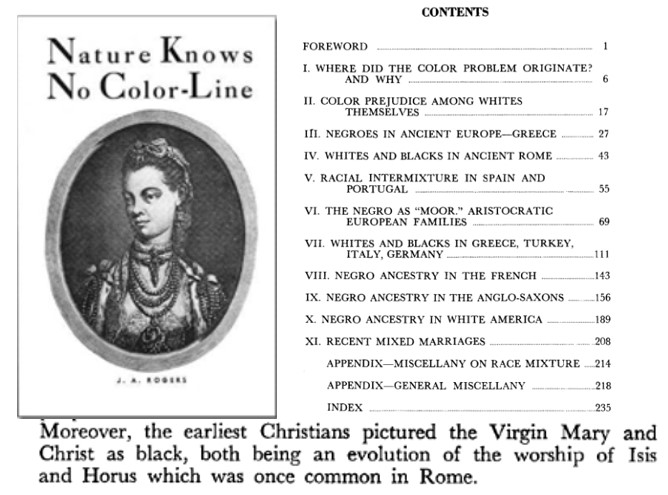 Whitewash Began After Expulsion of Moors in 1492
Whitewash Began After Expulsion of Moors in 1492
When Moors Rescued Europe From The Dark Ages shows that when the Moors ruled Spain from 711-1492 AD, they rescued Europe from the Dark Ages. The video below shows that Anne Boleyn, wife of Henry VIII of England was Black but is misrepresented as being a slave. The whitewashing of European history reportedly began after the defeat and expulsion of the Moors in 1492.
Was Queen Anne Boleyn Of England Black??
This is a coin of King Ferdinand II of Aragon. His daughter was Catherine of Aragon whose nephew was Holy Roman Emperor Charles V, a Hapsburg, shown below. The portrait was titled as the bodyguard of Charles V! Henry VIII annulled his marriage to Catherine to marry Anne Boleyn shown below, mother of Queen Elizabeth I. Henry’s divorce led to England’s break with the Catholic Church and the Reformation. Anne is considered England’s most important Queen Consort. However, Anne’s portrait was retitled as an African slave! See Europe’s Black History: An Untold Story.
Film
“The final months of Boleyn’s life, her struggle with Tudor England’s patriarchal society, her desire to secure a future for her daughter, Elizabeth, and the brutal reality of her failure to provide Henry with a male heir.”
“Anne Boleyn, the hit historical thriller, premiered on 12/9/21. Set in Queen Anne Boleyn’s final five months leading up to her execution, the three-part drama takes on a new perspective, spinning the tale of her downfall as a psychological thriller.”
Trailer:
The Negro Rulers of Scotland and The British Isles by Dr. John L. Johnson shows that the kings and queens of England were Black down through Queen Elizabeth I. They began to whiten their faces with powder and to whiten their paintings during the Renaissance after the defeat of the Moors.
Amazon Description
“Dr. Johnson’s work has become vital for readers who seek an understanding of the origin of man, and Africa’s contribution to the Bible and Natural History….. during the great African migration, the concept of the wheel, mathematics, the alphabet, reading, writing, philosophy, science, astrology , astronomy, Fine Arts, family hierarchy, bureaucracy parentheses (government), king, queen, dynastic rule, huge universities, great cities and churches, were rudiments brought out of Africa and spread throughout the world; a marvelous accomplishment that led to the Ultra-structure of Western Civilization.
This text highlights the earliest African rulers of Scotland, Southern Ireland and United Kingdom; a chronicle that focuses upon the Alpin Dynasty from Kenneth MacAlpin and his great-great-grandson Kenneth Dubh (Dub) or Kenneth the Niger (Black, Duff or Duffy ), whose descendants of different appearances continued to rule Scotland, England, Ireland and other nations of Europe, even until this day.”
Why Northern Europeans Have Light Skin
How Did Northern Europeans Evolve To Have Light Skin?
“Common European traits like pale skin evolved relatively recently in central and southern Europe. Researchers had long assumed that skin lightened as humans migrated from Africa and the Middle East into Europe around 40,000 years ago.
Experts had speculated that shorter day lengths and a sun lower in the sky favoured lighter skin, which more easily synthesised vitamin D. But a groundbreaking 2015 analysis of the genomes of 83 prehistoric Europeans showed that populations in Europe about 8,000 years ago were still mixed and diverse.
Traits commonly associated with modern Europeans, such as tallness, the ability to digest milk, and lighter skin tone, only became ubiquitous in Europe relatively recently. Experts found that about 8,500 years ago, early hunter-gatherers in central and southern Europe, including Spain, Luxembourg, and Hungary, had darker skin. They lacked versions of two genes….responsible for ‘depigmentation’, and hence pale skin, in Europeans today.
In the far north of Europe, where low light levels favoured pale skin, the team found hunter-gatherers had a lighter complexion. Two light-skin gene variants…. were found in seven people from the 7700-year-old Motala archaeological site in southern Sweden. A third gene found in the group, HERC2/OCA2, has been linked to blue eyes and may also contribute to blonde hair and light skin. The research shows that, contrary to previous theories, Europe was still a diverse continent up to at least 8,000 years ago, showing that pale skin developed in central and southern Europe much later than first thought.”
Cheddar Man shows white skin could be a recent phenomenon – Watch
Neenah Payne writes for Activist Post and Natural Blaze
Become a Patron!
Or support us at SubscribeStar
Donate cryptocurrency HERE
Subscribe to Activist Post for truth, peace, and freedom news. Follow us on SoMee, Telegram, HIVE, Flote, Minds, MeWe, Twitter, Gab, What Really Happened and GETTR.
Provide, Protect and Profit from what’s coming! Get a free issue of Counter Markets today.


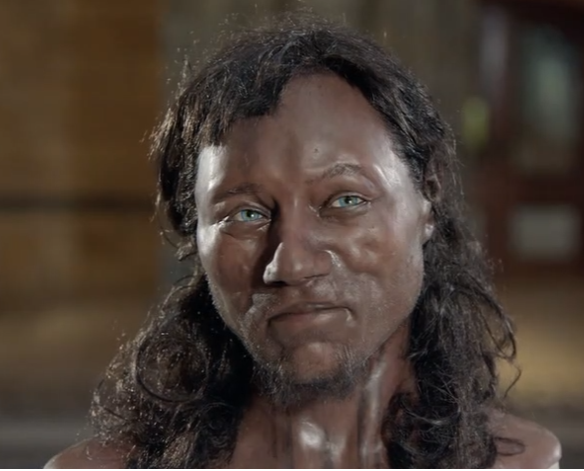
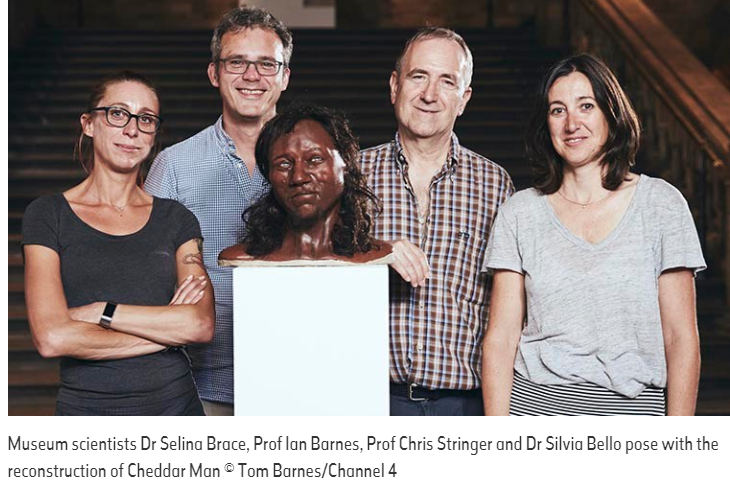
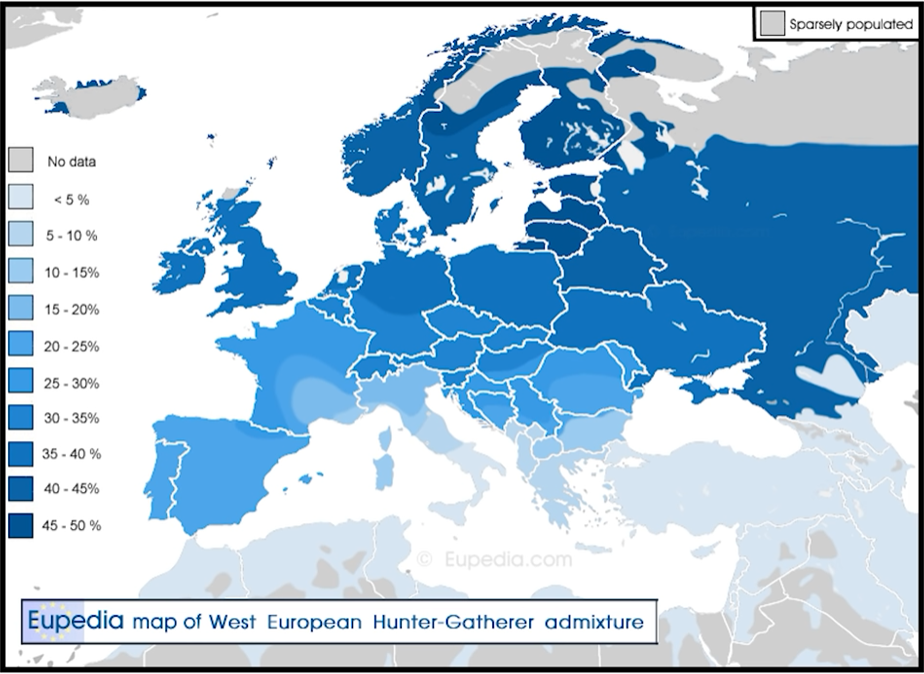
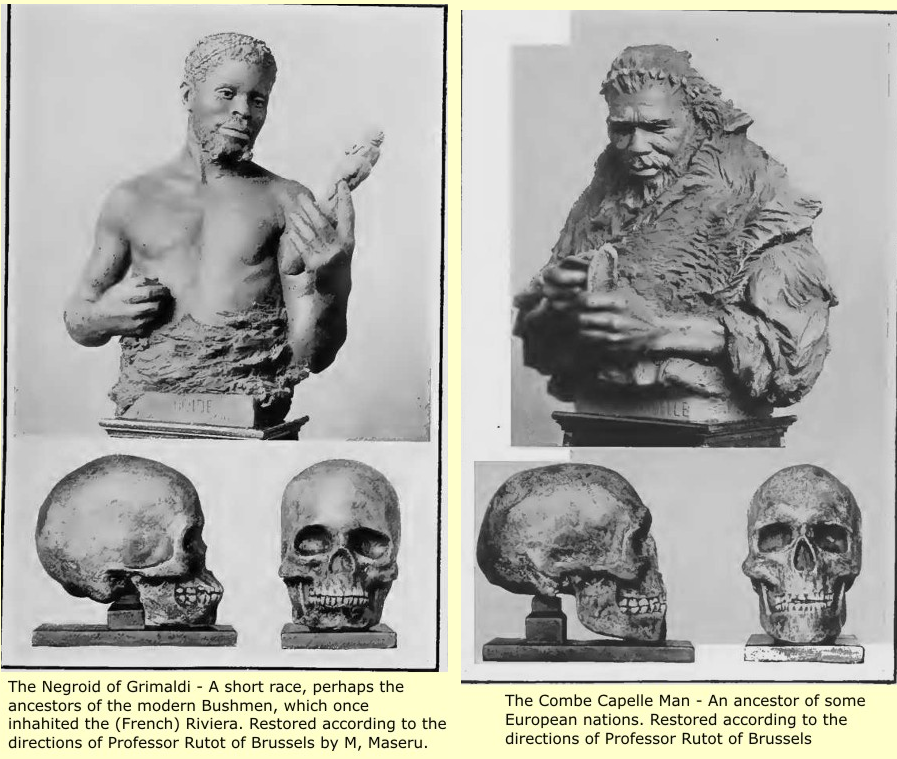

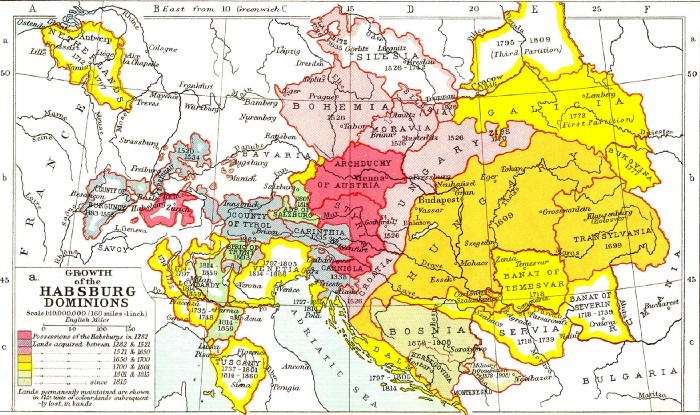


Be the first to comment on "DNA Shows Europeans Were Dark Skinned 10,000 Years Ago"